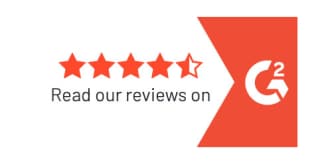While there are many business owner benefits when offering a 401(k), some of the most significant benefits are for employees.
This makes 401(k)s a win-win for businesses of any size, allowing employers to enjoy the many advantages of offering a retirement plan while their employees can save and build a secure retirement nest egg.
And for many employees, that’s one of their essential financial goals—saving enough money to retire on time and live their ideal lifestyle. And when it comes to setting themselves up for retirement, 401(k)s are a great option.
Here are seven benefits of a 401(k) plan for employees:
Benefit 1: It’s easier to save with payroll deductions.
401(k)s are a powerful savings tool for employees because they reduce friction in the employee’s path.
And the results are staggering. Employees are 15 times more likely to save for retirement if they have access to a payroll deduction savings plan like a 401(k). Instead of getting paid and taking an extra step to transfer funds to their investment accounts, employees save first and get paid second with payroll deductions. This method of automatic investing can make all the difference in preparing for retirement.
Benefit 2: There are unique tax advantages.
401(k) accounts benefit from a series of unique tax advantages.
At a high level, most employers offer two savings options within a 401(k)—Traditional and Roth.
First, Traditional and Roth have one powerful tax advantage in common—you don’t have to pay taxes on the funds inside your account while they’re growing and invested. This means you don’t pay tax on any dividends, interest, or capital gains within your 401(k), as long as you don’t withdraw the funds.
Next, there are some key differences to consider.
Traditional 401(k)s, also known as “pre-tax,” allow employees to contribute money to their 401(k) before income taxes are taken out. This can be valuable as employees can contribute more to their 401(k) than they would have if taxes had been taken out.
For example, if you pay 20% in income taxes and contribute $100 to your Traditional 401(k), that tax advantage saved you $20 in taxes, and that $20 went right into your 401(k), invested for retirement. So, the higher your tax rate, the greater the benefit of contributing money pre-tax.
But, like most things, there’s a catch.
With pre-tax contributions, you end up paying the taxes when you withdraw the money during retirement. But, for many, this is still a good trade-off because they can stay in a lower tax bracket during retirement than they can during their high-income years while working.
Next are Roth 401(k)s.
Roth 401(k)s are the opposite of Traditional. So you pay the taxes now, contribute the “after-tax” funds to your 401(k), but pay no income taxes on the distributions during retirement. This is a decision to pass up the tax advantages today in exchange for the tax advantages in the future. Generally, this is best for younger employees in a lower tax bracket who believe they’ll be in a higher bracket during retirement.
Whichever way employees decide to go, there are significant tax advantages to saving in a 401(k).
Benefit 3: You can enjoy higher contribution limits.
Next, 401(k)s have much higher contribution limits than other retirement plans like IRAs.
Contribution limits adjust to inflation, so be sure to check the IRS website for the most updated figures, but employees can contribute the following to their 401(k) account:
- $22,500 in 2023 ($20,500 in 2022)
In addition, employees age 50 or older have an additional “catch-up contribution” limit of:
- $7,500 in 2023 ($6,500 in 2022)
But, limits don’t stop there, as there’s a higher annual limit which includes employer matching and nonelective employer contributions in addition to the employee deferral and catch-up. That limit is the lesser of:
- 100% of the employee’s compensation, or
- $66,000 for 2023 ($73,500 including catch-up contributions); $61,000 for 2022 ($67,500 including catch-up contributions)
This can be a powerful benefit for employees, allowing them to save significant amounts in their 401(k) each year to prepare for retirement.
Benefit 4: You might increase your compensation with matching contributions.
Another key benefit of a 401(k) is employer matching contributions.
Employers aren’t required to match contributions, but many do an added benefit for their employees. Matching schedules vary, but a typical match structure is a 100% match for the first 3%, then a 50% match for the next 3%. That means if an employee contributes 6% to their 401(k), their employer will contribute 4.5%. This takes an employee’s overall contribution to 10.5%, taking advantage of powerful matching contributions to increase their savings.
Benefit 5: Compound interest provides a powerful force for saving.
Compound interest is said to be one of the most powerful financial forces.
And fortunately, employees can benefit from the power of compounding in their 401(k) as long as they can stay invested in the market. Essentially, compounding is earning interest on your earned interest. And the longer you let compounding work, the more powerful the effects on your portfolio.
Benefit 6: Investment fees are lower and options are fewer than other investment vehicles.
Next, there are some unique investment advantages for employees.
First, employees can benefit from lower investment fees within their 401(k). That’s because many investment companies offer different share classes for their funds depending on the situation. So, as a single investor, you may only have access to the “investor share class,” which typically comes with a higher investment fee. Alternatively, with a 401(k), your employer may access the “institutional share class,” which usually comes with a lower investment fee.
And while the difference in fees may seem small, the effect will compound over time, resulting in significant cost savings for even a small fee differential.
Next, employees can benefit from fewer investment options.
This may seem like a drawback, but for many, it means better outcomes. That’s because more options don’t always mean better decisions, and often, more options result in inaction, commonly known as the paradox of choice.
Alternatively, your employer will likely offer between 8 and 12 investment options within your 401(k). And typically, the options provided will have enough diversity to build a solid retirement portfolio and grow your wealth over the long run.
Benefit 7: Your account is portable.
Lastly, employees can take their 401(k) with them if they leave an employer—also known as “plan portability.”
In other words, employees own their 401(k) and can feel confident saving for retirement without worrying about forfeiting their funds if they leave their current employer. That said, there are a couple of things to understand:
- First, employer matching contributions may not be yours to keep—yet.
Depending on the specifics of your 401(k) plan, your employer matching contributions may be subject to a vesting schedule. This means you may not own the amounts your employer contributes immediately. For some, this means they have to work at their job for 1 to 3 years before they can keep their employer match. But, not all employers have a vesting schedule, so it doesn’t apply in every situation. But remember, anything you contribute to your account is always 100% yours, no matter how long you’ve been with your employer.
- And second, if you withdraw the funds instead of “rolling them over,” you will pay taxes and an early withdrawal penalty.
One common mistake employees make when changing jobs is withdrawing their 401(k) instead of rolling it over. This results in a taxable distribution and can create a 10% early withdrawal penalty for those under 59.5. So, when leaving your employer, remember that it’s usually better to roll the funds directly from your 401(k) to your new 401(k) or other retirement plan.
Your Partner for Retirement Benefits
At 401GO, we provide small business 401(k) plans powered by an easy-to-use platform. Our streamlined approach allows you to get up and running in just minutes with simple and affordable pricing to fit your unique business.
Talk to us about the many ways a 401(k) can benefit you and your employees.



